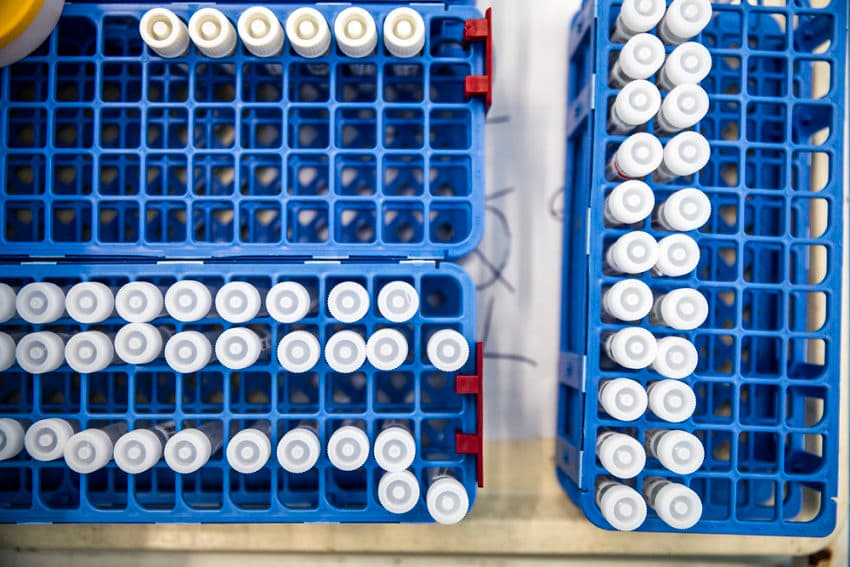Denmark again breaks 2021 record with 'concerning' number of new Covid-19 cases

After three days with under 4,000 new cases of Covid-19, Denmark registered 4,199 positive tests for the virus on Tuesday, the highest figure so far in 2021.
The 4,199 new infections represent the highest daily total since December 18th last year, when 4,508 were infected in one day. That is also the highest number throughout the Covid-19 pandemic in Denmark.
The figures come from national infectious disease agency State Serum Institute (SSI). 164,596 PCR tests were taken in the last day, giving a test positivity rate of 2.55 percent.
High infection numbers close to Tuesday’s level have now been consistent in Denmark for the last week.
Thursday and Friday last week both saw over 4,000 new infections recorded in the country and were, until Tuesday, the two days with the highest number of new infections in 2021.
Saturday’s total of 3,795 new infections and Sunday’s figure, 3,415, came from 189,557 PCR tests and 143,762 PCR tests respectively. That gives positivity rates of 2 percent and 2.38 percent for the two weekend days.
The total of 3,711 set on Monday came from 133,782 PCR tests, giving a test positivity rate of 2.77.
Tuesday therefore see a return to over 4,000 new cases for the first time since Friday last week.
The numbers represent a concerning trend, according to an analyst who spoke to news wire Ritzau.
“We have very many infections and this certainly gives some concern in relation to whether we have the situation under control or whether it will continue to increase,” said Kasper Kamark Iversen, professor and senior medical consultant at the University of Copenhagen and Herlev-Gentofte Hospital.
The number of patients admitted to Danish hospitals with Covid-19 has doubled in the last four weeks.
On Tuesday, 444 persons were in hospital with the coronavirus nationally. That is six more than Monday and the highest number since February.
85 new patients were admitted to hospital during the last day. That total is offset by discharges, giving the overall increase of six patients.
Hospitals are now feeling the strain of the high number of admissions, which remains lower than the peak from the second wave of the virus in Denmark. The figure exceeded 900 in early January this year.
“We have significantly fewer hospitalised than we had in December and January during the big wave,” Iversen said.
“But the situation is also different now in that we have a massive nurse shortage and closure of beds,” he added.
“So the system is certainly a bit more strained,” the professor said.
Of the 444 currently hospitalised patients, 49 are admitted to an ICU ward while 22 are receiving ventilator treatment.
READ ALSO: Denmark reinstates Covid-19 sick leave compensation for parents and companies
Comments
See Also
The 4,199 new infections represent the highest daily total since December 18th last year, when 4,508 were infected in one day. That is also the highest number throughout the Covid-19 pandemic in Denmark.
The figures come from national infectious disease agency State Serum Institute (SSI). 164,596 PCR tests were taken in the last day, giving a test positivity rate of 2.55 percent.
High infection numbers close to Tuesday’s level have now been consistent in Denmark for the last week.
Thursday and Friday last week both saw over 4,000 new infections recorded in the country and were, until Tuesday, the two days with the highest number of new infections in 2021.
Saturday’s total of 3,795 new infections and Sunday’s figure, 3,415, came from 189,557 PCR tests and 143,762 PCR tests respectively. That gives positivity rates of 2 percent and 2.38 percent for the two weekend days.
The total of 3,711 set on Monday came from 133,782 PCR tests, giving a test positivity rate of 2.77.
Tuesday therefore see a return to over 4,000 new cases for the first time since Friday last week.
The numbers represent a concerning trend, according to an analyst who spoke to news wire Ritzau.
“We have very many infections and this certainly gives some concern in relation to whether we have the situation under control or whether it will continue to increase,” said Kasper Kamark Iversen, professor and senior medical consultant at the University of Copenhagen and Herlev-Gentofte Hospital.
The number of patients admitted to Danish hospitals with Covid-19 has doubled in the last four weeks.
On Tuesday, 444 persons were in hospital with the coronavirus nationally. That is six more than Monday and the highest number since February.
85 new patients were admitted to hospital during the last day. That total is offset by discharges, giving the overall increase of six patients.
Hospitals are now feeling the strain of the high number of admissions, which remains lower than the peak from the second wave of the virus in Denmark. The figure exceeded 900 in early January this year.
“We have significantly fewer hospitalised than we had in December and January during the big wave,” Iversen said.
“But the situation is also different now in that we have a massive nurse shortage and closure of beds,” he added.
“So the system is certainly a bit more strained,” the professor said.
Of the 444 currently hospitalised patients, 49 are admitted to an ICU ward while 22 are receiving ventilator treatment.
READ ALSO: Denmark reinstates Covid-19 sick leave compensation for parents and companies
Join the conversation in our comments section below. Share your own views and experience and if you have a question or suggestion for our journalists then email us at [email protected].
Please keep comments civil, constructive and on topic – and make sure to read our terms of use before getting involved.
Please log in here to leave a comment.